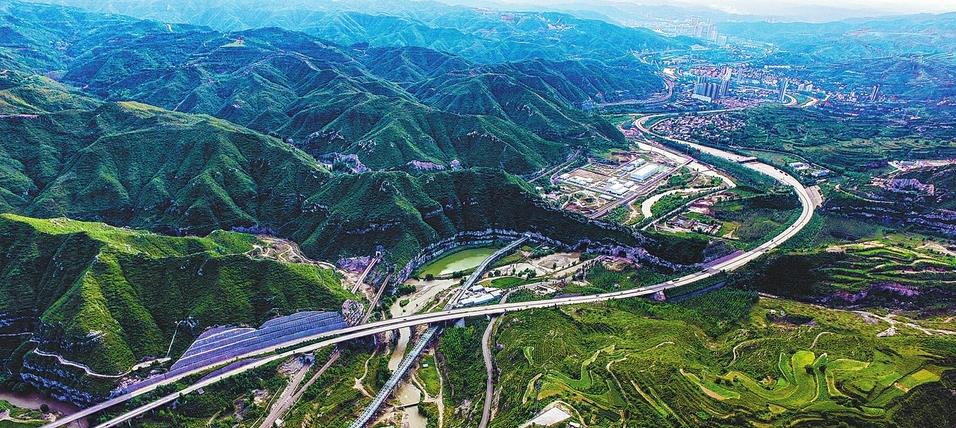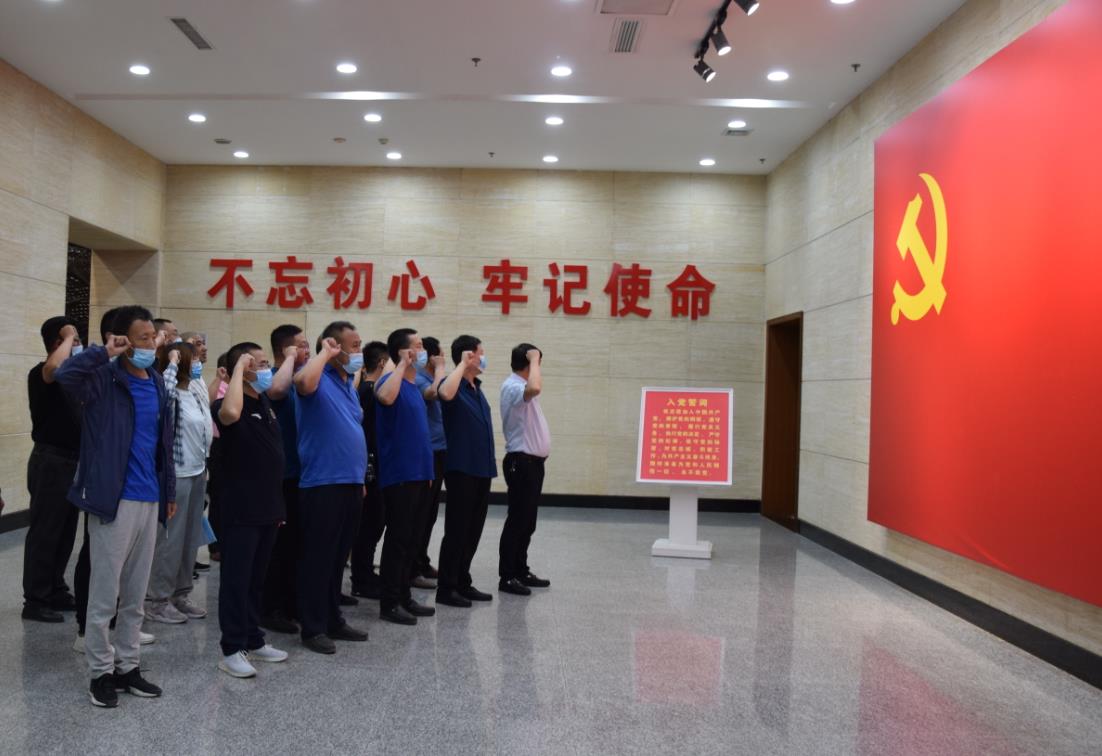
The TaiyuanGujiao expressway has helped to facilitate the integration of Taiyuan and Gujiao by shortening travel time between the two cities by almost an hour. PROVIDED TO CHINA DAILY
When a bus rode through the Xishan Mountains in the west of Taiyuan,the capital of North China's Shanxi province,on April 7,passengers were pleased at the sight of blooming sakura flowers on both sides of the road.
"We are delighted to be on a bus bound for the spring,"said passenger Li Changxin,citing a popular quote on the social media.
The bus,part of the Taiyuan bus route 917 fleet,was bound for Gujiao,a city some 55 kilometers west of Taiyuan.
Xi Yuan,the bus driver,was also relaxed throughout the trip,which took less than an hour and was mostly on an expressway.
"The traffic condition was quite different from some eight years ago when we had to travel on a zigzagging road hanging on the slopes of the mountains,"Xi said."A trip by car took nearly an hour and a half between the two cities and the travel could be much longer in cases of snow,rain and traffic congestion."
A complete change took place in July 2012,when an expressway linking the two cities became operational,Xi said.He added that the distance has been shortened by 23 km compared with the previous road and the traveling time by car has been shortened by almost an hour.
"The expressway has better integrated Gujiao with Taiyuan and brought new changes to the lives of our residents,"said Liu Jinchun,mayor of Gujiao."Our residents can even shop in Taiyuan after work and return to Gujiao the same night."
To further promote the integration,Taiyuan opened a direct bus service to link Gujiao.The 20-bus route 917 fleet begins its operations at 6:30 am and ends at 7:30 pm,said Miao Huaibao,an executive at Taiyuan No 1 Bus Corp.The company operates the 917 line.
"We serve about 6,000 passengers a day on weekdays and about 8,000 on weekends,"Miao said.
Taiyuan residents working in Gujiao and Gujiao residents working in Taiyuan are perhaps the most excited about the new expressway and bus service.
Feng Bing is a Taiyuan resident who works as an official in the township of Jialequan in Gujiao.
"With a travel time of about half an hour by car,I feel it's no different from working in Taiyuan,"Feng said.
Gujiao Mayor Liu said the expressway has offered a strong boost to Gujiao's economy.
"People can buy houses in Gujiao and work in Taiyuan,as the housing prices and other costs here are very competitive,"Liu said.
He added that the tourism industry has greatly benefited from the expedited transportation routes.
"We are receiving more self-driving tourists from Taiyuan on the weekends,"Liu said.
The mayor said the two cities will be further integrated during the 14th Five-Year Plan period(2021-25)as three new intercity highways have been planned.
The improvement in road connectivity between Taiyuan and Gujiao is only one example of the rapid development of expressways in Shanxi province over the past three decades.
Shanxi's first expressway,which connects Taiyuan and Pingding county in Hebei province,began construction in 1993.
By the end of 2020,the total length of operational expressways in Shanxi surpassed 5,700 km,covering more than 95 percent of the cities and counties in the province,according to the Shanxi Department of Transportation.
In 2019,the expressways in Shanxi served more than 170 million vehicles and cargo transportation volume surpassed 110 million metric tons.
As Shanxi is a major tourist destination in North China that features many cultural and natural attractions,a developed road network has offered great convenience to tourists and given a strong impetus to local tourism.
Ni Hongqiang,a tourist from Tianjin,is a frequent visitor to Shanxi because of his love for Shanxi's cultural legacies.
"Shanxi has so many cultural and natural attractions,and visitors worry they won't have enough time to see everything.
"Sure,the province is large and has many incredible destinations.But the density of its expressways and highways plus the addition of three major sightseeing roads along the Great Wall in the north,the Yellow River in the west and south,and the Taihang mountains in the east has made an intensive tour of Shanxi possible,especially for self-driving tourists."
Ni had a self-driving tour of Shanxi in October.His six-day trip covered destinations including the Yanmen Pass of the Great Wall,the Yungang Grottoes in Datong,the Wooden Pagoda in Yingxian and the Suspended Temple in Hunyuan.
Wang Pei contributed to this story.
By YUAN SHENGGAO
 山西路桥:党建引领 建好“四好农村路”山西路桥建设集团党委扎实开展“党建质量提升年”,实施“六大工程”,立足“十四五”高质量、高速度、高效益发展的战略基点,全面提高党建质量和党建引领发展水平,为打造“国内一流的交通基础设施投资、建设、施工现代化企业集团”提供坚强政治保障。
山西路桥:党建引领 建好“四好农村路”山西路桥建设集团党委扎实开展“党建质量提升年”,实施“六大工程”,立足“十四五”高质量、高速度、高效益发展的战略基点,全面提高党建质量和党建引领发展水平,为打造“国内一流的交通基础设施投资、建设、施工现代化企业集团”提供坚强政治保障。
 常住人口3491万 山西人口普查数据"出炉"山西省统计局向社会通报山西省第七次全国人口普查主要数据。数据显示,山西省常住人口为34915616人,比2010年(第六次全国人口普查数据,下同)减少2.23%,年平均减少0.23%。山西省常住人口总量减少,主要受人口流动变化等因素影响。
常住人口3491万 山西人口普查数据"出炉"山西省统计局向社会通报山西省第七次全国人口普查主要数据。数据显示,山西省常住人口为34915616人,比2010年(第六次全国人口普查数据,下同)减少2.23%,年平均减少0.23%。山西省常住人口总量减少,主要受人口流动变化等因素影响。